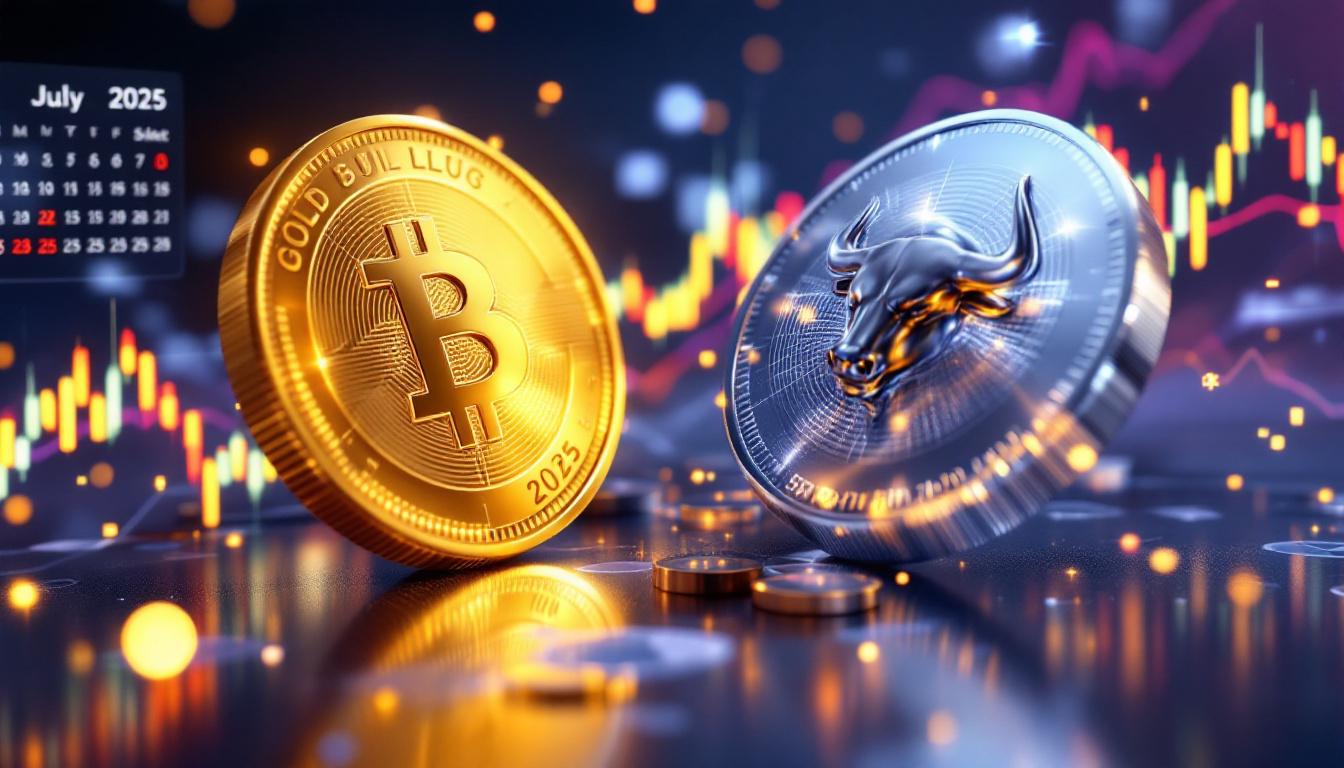Understanding China's Rare Earth Export Recovery
Rare earth elements play a crucial role in the global supply chain, serving as essential components in high-tech manufacturing, defense systems, and green technologies. When China implemented sweeping export controls in April 2025, the ripple effects were felt across global markets. Recent data, however, shows a partial recovery in exports, raising questions about China's strategic positioning and the future of global rare earth supply chains.
What Are Rare Earth Elements and Why Are They Important?
Rare earth elements comprise a group of 17 metallic elements with unique magnetic, luminescent, and electrical properties. Despite their name, most are relatively abundant in Earth's crust but rarely occur in concentrated, economically viable deposits.
These elements serve as critical components in technologies that power our modern world. From the powerful magnets in electric vehicles and wind turbines to the components in smartphones and military systems, rare earths enable countless technologies we rely on daily.
China maintains a dominant position in the global rare earth market, controlling approximately 80% of global processing capacity. This concentration of power has created significant supply chain vulnerabilities for nations dependent on these materials for their advanced manufacturing and defense sectors.
Strategic Significance of Rare Earth Elements
The 17 rare earth elements represent a family of metals with extraordinary properties that make them irreplaceable in many applications:
- Neodymium and dysprosium create the world's strongest permanent magnets
- Europium and terbium provide phosphors for displays and lighting
- Cerium serves as a catalyst in automotive emissions systems
- Lanthanum enhances battery performance in hybrid vehicles
These elements form the backbone of technologies crucial for both economic prosperity and national security. As Bloomberg News noted in their July 2025 analysis, "Magnets — a component central to recent trade tensions" serve as the foundation for everything from precision-guided munitions to medical imaging equipment.
Global Demand Dynamics and Supply Chain Vulnerabilities
The clean energy transition has dramatically accelerated demand for rare earth elements. Wind turbines require approximately 1 ton of rare earth magnets per megawatt of capacity, while electric vehicles use roughly 1 kilogram of rare earth elements per vehicle.
This surging demand creates strategic vulnerabilities when supply is concentrated in a single nation. The dependence on Chinese processing capacity has prompted countries worldwide to pursue alternatives, though developing competing supply chains requires significant time, investment, and expertise.
How Did China's Rare Earth Export Restrictions Impact Global Markets?
In early April 2025, China implemented sweeping export controls targeting seven critical rare earth elements. According to Bloomberg News reporting from July 17, 2025, these controls "threatened deep disruptions to US industry and encouraged US President Donald Trump to agree a trade truce."
Timeline of China's Export Control Implementation
The control measures required all rare earth shipments to obtain export licenses issued by China's Ministry of Commerce. This created a significant backlog of applications as officials reviewed each request against newly established criteria.
The effects were immediate and severe. Export volumes plummeted to 2,115 tons in May 2025, representing a five-year low. Manufacturers worldwide scrambled to secure supplies as uncertainty mounted about future availability.
"China launched its tougher export regime in early April 2025," reported Bloomberg News, creating what industry analysts described as an unprecedented supply shock to global high-tech manufacturing.
Measurable Market Impacts During Restriction Period
The export controls didn't just affect the United States but created collateral damage across global supply chains. As Bloomberg News reported, the "blanket move also hurt companies and irked governments from Europe to India, deepening global trade turmoil."
The restrictions particularly affected:
- Automobile manufacturers facing delays in electric vehicle production
- Defense contractors struggling to source components for guidance systems
- Renewable energy developers unable to secure magnets for wind turbines
- Consumer electronics producers facing component shortages
These disruptions accelerated efforts to develop non-Chinese supply chains, though such initiatives require years to reach commercial scale.
What Does the Recent Export Increase Signify?
June 2025 brought a significant shift in China's export patterns. According to Bloomberg News, "exports of rare earth products jumped in June," rising 80% from May's five-year low.
June 2025 Export Recovery Analysis
The data shows June exports reached 3,808 tons, up from 2,115 tons in May. This substantial increase suggests a potential easing of restrictions, though volumes remain "still well below the levels that preceded the huge shock," according to the Bloomberg report.
This partial recovery indicates China may be responding to international pressure while maintaining strategic leverage in ongoing trade negotiations. Bloomberg News reported that "governments worldwide have urged Beijing to boost flows," reflecting the global concern over supply disruptions.
The export increase appears focused on addressing the backlog of license applications rather than abandoning the control system entirely. Industry analysts suggest this represents a calibrated response rather than a full policy reversal.
Potential Drivers Behind the Export Policy Shift
Several factors likely influenced China's decision to increase export volumes:
- Diplomatic pressure from major trading partners beyond just the United States
- Economic considerations as reduced exports impact Chinese producers
- Strategic recalibration following trade negotiations with the Trump administration
- Balancing short-term leverage against long-term market positioning
China appears to be making a calculated adjustment rather than abandoning its strategic position in the rare earth market. By partially easing restrictions while maintaining the licensing framework, Beijing preserves its leverage while reducing diplomatic friction.
How Are Rare Earth Magnets Central to Trade Tensions?
Permanent magnets represent the highest value-added segment of the rare earth supply chain and form the core of the current trade dispute. According to Bloomberg News, magnets constitute the "bulk" of rare earth product exports and proved to be "Beijing's most powerful weapon in its US-China trade war impact with the Trump administration."
Strategic Importance of Rare Earth Magnets
These powerful magnets, primarily neodymium-iron-boron (NdFeB) compositions, enable countless modern technologies:
- Electric vehicle motors that deliver high torque with minimal weight
- Wind turbine generators that convert mechanical energy to electricity
- Hard disk drives that store digital information
- Precision guidance systems in advanced weaponry
China's near-monopoly on magnet production represents a strategic vulnerability for Western nations. While raw materials can be sourced from various locations, the technical expertise and manufacturing capacity for high-performance magnets remains heavily concentrated in China.
Supply Chain Vulnerabilities Exposed
The export restrictions exposed critical vulnerabilities in global supply chains. When magnet supplies were threatened, manufacturers had few immediate alternatives.
The recent export data reveals an interesting trend: while finished magnet exports remained restricted, Bloomberg News reported that exports of "mineral, oxide or metal forms spiked to the highest since 2009," suggesting "a rush by buyers to get hold of the materials in order to make magnets outside China."
This shift indicates manufacturers are attempting to reduce dependency by developing magnet production capacity outside China, though establishing such facilities requires substantial investment and technical knowledge.
What Are the Broader Implications for Global Trade Relations?
The rare earth dispute highlights the evolving nature of global trade tensions, where strategic materials become powerful bargaining chips. According to Bloomberg News, China's rare earth trade disruption "proved to be Beijing's most powerful weapon in its trade war with the Trump administration."
US-China Trade Dynamics and Rare Earth Leverage
The export restrictions demonstrated China's ability to target strategic vulnerabilities in the U.S. supply chain. When faced with potential disruptions to high-tech manufacturing and defense production, the Trump administration agreed to trade concessions.
This dynamic illustrates how control over critical minerals energy transition can translate into geopolitical leverage. The rare earth restrictions proved more effective than traditional tariff measures in extracting concessions.
Collateral Impact on Third-Party Nations
Perhaps most significantly, the export controls affected nations beyond the United States. Bloomberg News reported that the move "hurt companies and irked governments from Europe to India," creating unintended diplomatic friction.
This collateral damage accelerated global efforts to reduce dependency on Chinese rare earth supplies. European, Japanese, and Indian manufacturers caught in the crossfire have intensified their search for alternative sources and increased government intervention in critical mineral markets.
What Role Does Smuggling Play in Rare Earth Markets?
The existence of smuggling networks suggests official export restrictions may be partially circumvented through unofficial channels. According to recent reports, "China's spy agency on Friday reiterated its intent to clamp down on smuggling of rare earths."
China's Anti-Smuggling Enforcement Actions
In July 2025, China's Ministry of State Security announced a crackdown on rare earth smuggling operations. The agency specifically accused "unnamed foreign entities of orchestrating trafficking of the materials 'by means of mail delivery,'" according to Bloomberg News.
This high-level security response indicates that significant volumes may be moving through unofficial channels, potentially undermining the effectiveness of formal export controls. The involvement of China's primary intelligence agency suggests authorities view the issue as a matter of national security rather than routine customs enforcement.
Underground Supply Chain Implications
The existence of smuggling networks creates several challenges for the rare earth market:
- Quality uncertainty for materials sourced through unofficial channels
- Compliance risks for manufacturers using materials of uncertain origin
- Price premiums for smuggled materials that bypass official controls
- Distorted market signals as official export data fails to capture total flows
These unofficial channels may partially offset the impact of formal export restrictions, though reliance on smuggled materials creates significant risks for manufacturers.
What Are the Current Market Trends for Rare Earth Materials?
The market has responded to export restrictions with significant shifts in purchasing patterns and pricing. Most notably, Bloomberg News reported that exports of rare earths in "mineral, oxide or metal forms spiked to the highest since 2009."
Price Movements and Supply-Demand Dynamics
This spike in raw material exports suggests a strategic pivot by manufacturers. Rather than remaining dependent on Chinese magnets, buyers are securing raw materials to develop production capacity elsewhere. This represents a long-term threat to China's position in the value-added segments of the rare earth market.
The export restrictions created significant price volatility, with premium pricing for materials processed outside China. Manufacturers have responded by:
- Stockpiling critical materials when available
- Exploring substitution where technically feasible
- Investing in recycling to recover rare earths from end-of-life products
- Developing alternative suppliers outside China
These adaptations represent both short-term responses to immediate supply concerns and long-term strategic shifts in supply chain management.
Industry Adaptation Strategies
The most significant adaptation appears to be efforts to establish magnet production outside China. By securing raw materials and developing processing capacity elsewhere, manufacturers aim to reduce vulnerability to future export restrictions.
According to Bloomberg News, the spike in raw material exports "suggests a rush by buyers to get hold of the materials in order to make magnets outside China." This shift could eventually reduce China's leverage, though developing competitive production capacity requires years of investment.
How Might Rare Earth Trade Evolve in the Coming Years?
While the MINING.com article doesn't specifically address future scenarios, the current situation points toward several likely developments in global rare earth markets.
Future Scenarios for Global Rare Earth Supply Chains
The recent trade tensions will likely accelerate several trends:
- Increased investment in non-Chinese mining and processing
- Government intervention through strategic stockpiles and production incentives
- Enhanced recycling of rare earth materials from end-of-life products
- Research into alternatives that reduce or eliminate rare earth requirements
Disclaimer: The following projections represent informed analysis based on current market dynamics but should not be considered definitive predictions of future market conditions.
These developments won't immediately end China's dominance, but they may gradually reduce its market share and corresponding leverage in trade disputes.
Technology Trends Affecting Demand Patterns
The clean energy transition will continue driving demand for rare earth elements, particularly in electric vehicles and wind energy. However, manufacturers are increasingly exploring designs that reduce rare earth content or utilize more accessible elements.
Innovation in both material science and engineering design may eventually reduce dependency on the most supply-constrained elements, though such advances typically require years of development and testing before commercial deployment.
FAQ: Rare Earth Elements and Global Trade
What exactly are rare earth elements?
Rare earth elements comprise 17 metallic elements on the periodic table, including neodymium, dysprosium, and terbium. Despite their name, most are relatively abundant in Earth's crust but rarely occur in concentrated, economically viable deposits. Their unique properties make them essential for technologies ranging from smartphones to military systems.
Why does China dominate the rare earth market?
China's dominance stems from decades of strategic investment in mining, processing, and manufacturing capabilities, combined with less stringent environmental regulations that kept production costs lower than competitors. The country controls approximately 80% of global processing capacity and has developed comprehensive expertise across the entire value chain.
Are there viable alternatives to Chinese rare earth supplies?
Several projects are developing outside China, including expanded operations at Mountain Pass in California, Lynas Corporation's facilities in Australia and Malaysia, and emerging projects in Canada, Greenland critical minerals, and Africa. However, building complete supply chains takes significant time, investment, and technical expertise.
How do rare earth export controls affect everyday consumers?
While not immediately visible to consumers, restrictions can eventually lead to higher prices for electronics, electric vehicles, and renewable energy technologies. Extended disruptions could potentially cause product shortages or delays in manufacturing of high-tech consumer goods.
What's the difference between rare earth mining and processing?
Mining extracts rare earth-containing ore from the ground, but processing separates the individual elements through complex chemical procedures. China's dominance lies primarily in processing capacity rather than mining, which creates a bottleneck even when raw materials are sourced elsewhere.
Can recycling solve the rare earth supply challenge?
Recycling shows promise but currently recovers only a small fraction of rare earths. Technical challenges include the small quantities used in each device and the complex disassembly required. However, investment in recycling technologies is increasing as manufacturers seek to reduce supply chain risks through the establishment of a critical raw materials facility.
Curious About Investing in the Next Major Mineral Discovery?
Stay ahead of the market with Discovery Alert's proprietary Discovery IQ model, which instantly notifies investors of significant ASX mineral discoveries, transforming complex data into actionable investment insights. Explore why major mineral discoveries can lead to remarkable returns by visiting Discovery Alert's dedicated discoveries page.




